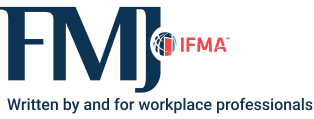Insurance Trends
Can insurance still be a significant part of a roof risk management plan?

Insurance policies, along with their coverage, terms, limitations and exclusions, represent a contractual relationship between the insurer and the insured. A thorough review of the policy is crucial to understand coverage, terms, limits, exclusions, and the insurer's responsibilities. This discussion specifically focuses on property insurance for commercial buildings and how current insurance trends may affect claims related to roofing systems.
Terms
To aid in understanding property insurance and its related terms, here are some common definitions facility managers should know.
- Actual Cash Value (ACV) - An amount equivalent to the fair market value of the damaged property immediately preceding the loss.
- Adjuster - The individual responsible for determining whether and how much the insurer should pay for a claim of loss.
- Claim - Notification to the insurer that a loss may have occurred under the terms of the policy.
- Deductible - The portion of the loss that the insured must pay before insurance benefits are applicable.
- Depreciation - A decrease in value due to factors like age, wear and tear.
- Endorsement - An amendment to an existing insurance contract that alters the terms of the original policy.
- Insured - The policyholder or entity protected in the event of a loss or claim.
- Insurer - The insurance company.
- Limit - The maximum amount a policy will pay, either overall or under a specific coverage.
- Loss - The financial damage incurred due to an insurable event.
- Peril - A danger or risk.
- Replacement Cost Value (RCV) - The full cost to repair or replace damaged property without depreciation deductions.
- Secondary peril - Smaller to mid-sized loss events or secondary effects following a primary catastrophe, such as an earthquake or hurricane.
- Underwriting - The process of selecting applicants for insurance and classifying them according to their degrees of insurability to determine appropriate premium rates, including rejection of unacceptable risks.

Brief History
The insurance industry originated under the principle of individuals uniting to mitigate risks and respond to dangers such as fires and theft. The Great Fire of London in 1667 led to the establishment of one of the first official insurance companies. Historically, buyers seeking financial protection from various perils needed to acquire separate policies for each risk, including fire, flooding or wind damage.
Early property insurance policies utilized ACV as the standard for valuing insured property and assessing losses. In the past half-century, ACV policies have largely been replaced by RCV policies, which allow for improvements if the property is repaired or replaced. RCV policies have become the standard property insurance product, providing payment for the installation of new materials without deductions for age, wear, tear or deterioration present at the time of loss.
Initially, most commercial property policies included a flat (or straight) deductible, a specified dollar amount that applies to each loss. This amount is subtracted from the covered loss, with the remaining sum paid by the insurer.
Trends
Insurers distinguish between functional damage and aesthetic (or cosmetic) damage. Unless an endorsement specifically covering aesthetic damage is purchased, most policies now only cover functional damage. Functional damage is commonly defined as "does the roof leak?" This can be particularly concerning with metal roofing, where hailstorms may cause dents and displace coatings or manufactured finishes without immediately causing leaks. The criterion for "does the roof leak?" is assessed at the time of the adjuster's inspection, rather than based on potential future issues. The burden of proof rests with the insured. This definition of damage inadequately addresses roofs that may have experienced reduced longevity or performance due to a peril but do not currently leak, a situation often seen following hailstorms or wind events.
A significant change observed in the industry is the trend towards calculating loss using the ACV method instead of RCV. In ACV, the value of an asset, such as roofing, is depreciated based on age and condition. A major concern is the absence of standardized methods within the insurance industry for calculating ACV. A sample building can help illustrate the current situation.
Consider a single-story, wood-framed office building with a brick exterior comprising 10,000 square feet of roof area. The building is valued at $2 million, and the replacement cost of the installed modified bitumen roof is $200,000. Following a hailstorm, the roof suffers complete loss and leaks, meeting the threshold for functional damage.
The roof is 10 years old, and the adjuster has determined that its lifespan is 20 years based on warranty duration, historical averages and the common misconception that all roofs last 20 years. Excluding any deductible amounts (to be considered later), the adjuster concludes that the ACV of the roof is $100,000 (10 years / 20 years x $200,000).
This calculation does not always assign appropriate value to a well-designed and constructed roofing system, an aggressive preventive maintenance (PM) program, periodic repairs or the application of roof coatings. In this example, including a properly designed roofing system with an annual PM program could realistically extend functional roof life to 25 to 30 years. In that case, the ACV would range from $120,000 to $132,000, representing a 20 to 32 percent increase in ACV.
Moreover, according to most current policies, insurers must replace or repair to "like" conditions. This means the insured receives value for what is owned, even if it is a roof that does not comply with current building codes or energy standards. Depending on local code department requirements and the extent of necessary work, owners may be required to bring the roof up to new code and energy standards. This additional cost would be the owner's responsibility and could reach thousands of dollars. Most insurers offer endorsements for code upgrade coverage, which are fixed dollar amounts for incurred expenses that could become quite pricey based on the building's condition and age.
Another noticeable trend concerns deductibles. Historically, deductibles have been fixed amounts representing the loss that the insured is responsible for paying before benefits from the insurance company are payable. Recently, deductibles, particularly for hail or wind perils, have shifted to being a percentage of the insured building’s value. These deductibles can range from 1 to 5 percent of the building's value and would apply only if the roof is damaged. For example, with a 5% deductible, the amount would be $100,000 (5 percent x $2 million). Instead of higher deductibles, some policies now impose limits on coverage for specific perils, such as hail and wind events.
For a functionally damaged, leaking, 10-year-old roof affected by hail, the calculation would yield $100,000 (ACV) minus $100,000 (deductible) = $0 for a roof replacement project that could now exceed $300,000 due to code and energy efficiency upgrades. This results in no coverage for a roof believed to be adequately insured, now functionally damaged by a hailstorm and leaking.
Why?
The changes in the insurance industry stem from increased losses and expenditures. A 2024 report by MarshMcLennan Agency highlighted 28 U.S. billion-dollar weather and climate disasters in 2023. These disasters included hail, flooding, wind events, hurricanes, winter storms, firestorms and tornadoes. The report identified three key insurance market trends driving these changes: rising losses from non-modeled secondary perils, escalating reinsurance costs and underinsured properties.
Primary perils, such as hurricanes and earthquakes, are more predictable and less frequent but can lead to significant financial losses. In contrast, secondary perils—like tornadoes, hailstorms, flooding and wildfires—typically result in low to medium losses, often overlooked or underestimated and less likely to be modeled or predicted. According to AMBest, secondary perils accounted for a larger share of losses in 2023, exceeding ten billion dollars.
The insurance industry experienced an estimated reinsurance pricing increase of up to 50 percent in 2023, marking the largest single-year increase since Hurricane Katrina in 2005. This rise can be linked to the increase in significant losses from both primary and secondary perils, along with available capacity. Experts predict that as market conditions improve and reinsurance enthusiasm returns, the rate of increase will begin to decline.
Factors such as inflation, supply chain issues, labor shortages, and rising material costs have resulted in an estimated 87 percent of buildings being undervalued, with up to 68 percent underinsured by 25 percent and about 19 percent underinsured by 100 percent This situation arises from a historical tendency of property owners and underwriters to renew policies without thoroughly reevaluating property values and conditions, creating a false sense of insurance security and underinsurance. Consequently, many underwriters are reassessing marginal properties to determine their insurability.
Getting Help
Engaging an independent professional roof consultant can provide significant benefits. These consultants are neither insurers, underwriters, nor adjusters and do not write policies, coverages, or limitations.
When securing or renewing property insurance, roof consultants can assess the roof and recommend upgrades or improvements that may encourage an underwriter to issue a policy. If the roof is in good condition, they can supply documentation that may influence pricing or coverage when presented to the underwriter.
Regular evaluations of the roof are essential to document historical conditions and develop a roof management plan aimed at maintaining coverage or favorable pricing.
When replacement becomes necessary, creating a site-specific code-compliant specification for the roofing project is crucial. Coupling this with thorough construction observation ensures a properly designed and installed roofing system.
Recommendations regarding endorsements for aesthetic or cosmetic damage versus functional damage should also be provided.
In the event of a covered loss, a roof consultant can help validate the threshold for functional damage by assessing whether the roof leaks. Not all membrane breaches lead to visible leaks inside, especially in roofs with a vapor retarder, air barrier or monolithic roof deck, which may allow water into the roof assembly without it reaching the occupied space below. Identifying this issue can be performed through destructive core sampling or non-destructive roof moisture surveys.
Assessing the roof for the extent of functional or cosmetic damage and developing a remedial plan is important.
Collaboration with the insurer’s adjuster is vital for accurately determining the ACV of the roof system. Discussions should include roof construction, PM programs, periodic repairs, the application of roof coatings, replacement costs, and considerations suggesting that the roof's serviceable life may exceed industry norms.
Working with the insured’s adjuster to define "like" replacement parameters and engaging local code officials to establish required code upgrades is also necessary.
If remedial work is mandated, supplying the plans and specifications needed to meet project requirements, including any essential code upgrades, is critical. Assistance with project bidding ensures competitive pricing from qualified contractors, alongside construction observation to guarantee quality installation.
Recent trends in the property insurance industry may leave many insured parties questioning the adequacy of their coverage against anticipated perils. Regardless of these trends, reviewing the policy as part of the overall building risk management plan is essential, ensuring that the terms, conditions and limitations are comprehended. Insurance offers limited protection from loss, contingent upon understanding the true benefits and limitations of the documents and the steps that can be taken to strengthen the position with insurers and underwriters.

Read more on Operations & Maintenance , Project Management and Risk Management
Explore All FMJ Topics









